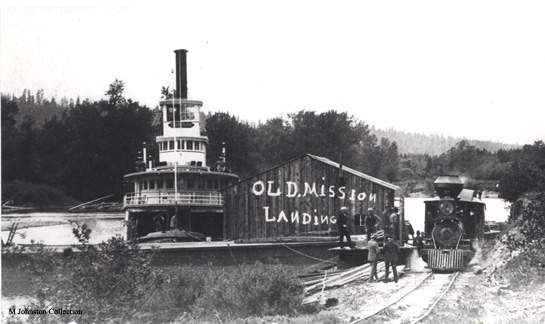OK so this is kinda off topic but kinda not. My prototype the Coeur d’Alene Railway and Navigation Company had some interesting challenges before the coming of the all rail Oregon Railway and Navigation Company. Before the all rail line stuff was transported by rail to Coeur d’Alene then loaded onto steamers and barges, then floated up the lake to the river to Mission Landing. There it was then off loaded onto the railroad. The first challenge for the RR was to deliver the locomotives. While all the locomotives would have been delivered this way I have proof that the #4 was transported this way based on newspaper accounts. I also know from build sheets that this locomotive weighed 74,000 pounds. I have always wondered how 74,000 pounds would have been loaded and unloaded from boats. Then moved and set on rails. While I have had some speculation nothing so far has been discovered on how they did it. Its a mystery.
Now I doubt it was done this way, but watching a show on science channel, Unearthing Ancient Secrets: Engineering Ancient Rome, gave some remarkable insight on how the ancients tackled lifting very heavy stuff with nothing but human power and mechanical advantage. So the Colosseum had some stones that weighed as much as 5200 pounds and were lifted 170 feet or 15 stories high. How did they do it. well cranes, human powered cranes. A series of cranes was used that were approx 30 tall and used as many as 5 slaves to do the work. It was built with a 10’ diameter hamster wheel. Here is the only ancient carving from the area that shows how it was done.

here are some of the modern experiments that proved the technology works
The one on the show used a 10:1 wheel with a 10:1 block and tackle giving 100X lifting capacity. One 120# girl lifted a 1200# block with the ease of walking uphill. Three men lifted 5200# 4 feet high. The were mobile by just using the wheel to roll it around.
Pretty damn amazing when you realize how big and tall the Colosseum is.






